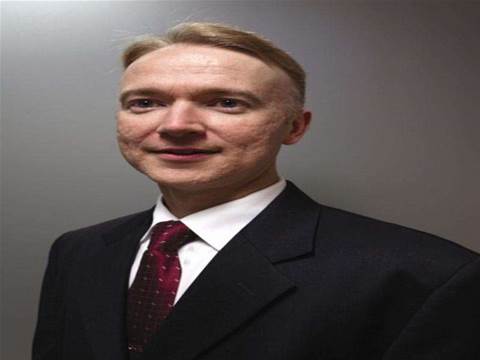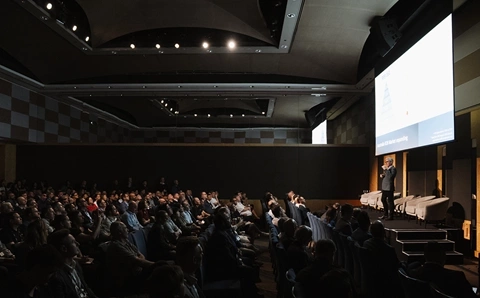As virtualisation continues to prove itself as the shining star of the IT space, distribution giant Ingram Micro has reacted to demand with the formation and continued expansion of its own virtualisation practice.
Dealing with the biggest reseller base in Australia, Ingram is well placed to mediate between virtualisation’s most significant players and a reseller base keen to stay on top of the latest technology booms.
“Just about every reseller along the way is going to sell virtualisation,” said Peter Pollari, business manager for the virtualisation practice at Ingram Micro. “We need to take this as a given, it is going to happen. What we want to encourage and support is to allow the reseller to go and solve business problems.”
Ingram’s virtualisation practice is one facet of the firm’s Solutions Group, currently under the leadership of its general manager, Stuart Ellis.
“We have very specialised focuses or business units, including virtualisation,” said Pollari. “This allows cross collaboration between the other business units. A virtualisation trend affects all of our Solutions Group businesses as it crosses through our HP, IBM, applications, Unified Communications, networking and security units.”
Pollari said Ingram is continuing to expand its virtualisation practice in Australia, with the recent appointment of a new business development manager (BDM) in Sydney and another to follow in Melbourne.
Vendor stable
“The messaging we are building out is that it is not just about point products, it is about solutions. Initially VMware is the core of our offering and we are building complimentary vendors around that,” he said. “We have taken on PlateSpin, Avocent and we have also taken on services after partnering with TAS (Technical Architecture Solutions) – a non-conflicting third-party services organisation. We have partnered with TAS to provide post-sales implementation to allow a reseller to augment their own services.”
Ingram will also be looking to add “additional complimentary vendors” into its virtualisation practice moving forward.
“We are trying to avoid vendors with overlap,” said Pollari. “We want to build up true solutions rather than just shoving out products. As part of the selection process we undertook, we consulted very heavily with our other business units and the other business managers, in particular around HP and IBM. Avocent has an OEM relationship with HP and IBM. If you look at PlateSpin, we wanted to make sure it worked across all our technologies and it does that. We are leveraging the technology we have in the other business units in the Solutions Group.”
Technical support
Pollari said putting feet on the street from a technical installation perspective is expensive and can initially burden a reseller. However, by adopting TAS’ services, it is not intrusive to a reseller and allows them to skill-up from a technical perspective, when they are ready.
“Resellers can keep selling products, services and solutions, then add this technical layer when required,” he said. “Specifically around virtualisation we have 12 VCPs (VMware Certified Professional). We now have two dedicated virtualisation BDMs in NSW and we are adding another in Victoria. We have two dedicated virtualisation products managers. We want to increase our staff in this area. One of the challenging things about adding staff is finding people with the right skills set. We provide the pre-sales architecture services and TAS does the post-sales implementation.”
Looking at simply box-shifting in the virtualisation space fails to serve any long-term viability for all concerned, according to Pollari. Even vendors have woken up to the concept of the need for being part of a greater solution that has got to add value and solve a business problem.
“We want the end-user to have a positive experience around virtualisation, because if done wrong it can be ugly. We understand that any reseller can sell virtualisation, from the smaller SMBs to the larger enterprises, and they can now procure that post-implementation service in an accredited manner by using TAS.
So when someone plugs it in, it works. The end-user then very quickly forgets the price. They just see productively gains.”
Reseller coverage
“Originally virtualisation was all about server and storage. It was high-end enterprise, but it is in the mid-tier space where the action is really starting to happen.”
Ingram has 6500 active reseller accounts, 500 of which currently offer virtualisation. “We have been attempting to push into the mid-tier space as we see huge opportunity for growth there. We are also looking to work with vendors to improve their OEM relationships with the likes of Lenovo.
“The guys who might have been buying the occasional Microsoft licence from us or selling the odd SMB-type server and haven’t really thought about virtualisation. These are the guys who are going to start to step up and will start a regular churn of every time they sell a server it will be virtualised.”
Concerning the design phase of the virtualisation piece, Pollari said there’s a heavy dependence on Ingram to support its reseller base.
“Even the enterprise players are stretched from a technical architecture perspective, so we are augmenting a lot of their own services. We allow resellers to get a toe in the water without taking on that heavy technical burden,” he said.
Looking forward
“I would like to think that distribution will play an ever-expanding role in virtualisation. As we move further away from that point product, where people think a brand equals virtualisation, we will see these complimentary vendors gain traction in the market. These vendors fill niches, but those niches are there because of virtualisation presenting these opportunities.”
Looking towards the next two years, Pollari said he sees no reason why virtualisation will not continue to grow at its current rate.
“If you look at the amount of servers out there, say only between six and eight percent are virtualised. This really is a green field for resellers and this is where there are opportunities. When resellers take virtualisation to customers and show the benefit, they are actually solving problems. End-users see their problems are being solved and resellers get more stickiness to their customers. Virtualisation is here, it is happening, and it is about how quickly the resellers are going to get on board,” added Pollari.
Distributing the virtual message
By
Trevor Treharne
on Jul 22, 2008 10:39AM

Got a news tip for our journalists? Share it with us anonymously here.
Partner Content

Beyond the box: How Crayon Is Redefining Distribution for the Next Era

Shared Intelligence is the Real Competitive Edge Partners Enjoy with Crayon

How Expert Support Can Help Partners and SMBs Realize the Full Value of AI

MSPs with a robust data protection strategy will achieve market success
_(21).jpg&h=142&w=230&c=1&s=1)
Empowering Sustainability: Schneider Electric's Dedication to Powering Customer Success
Sponsored Whitepapers

Cut through the SASE confusion

Stay protected as cyber threats evolve

Defend Your Network from the Next Generation of AI Threats
.jpg&w=100&c=1&s=0)
The race to AI advantage is on. Don’t let slow consulting projects hold you back.
_(8).jpg&w=100&c=1&s=0)
The changing face of Australian distribution












